Balanced SSFP Dixon imaging with banding-artifact reduction at 3 Tesla
- PMID: 25227766
- PMCID: PMC4362865
- DOI: 10.1002/mrm.25449
Balanced SSFP Dixon imaging with banding-artifact reduction at 3 Tesla
Abstract
Purpose: To develop a three-dimensional (3D) balanced steady-state free-precession (bSSFP) two-point Dixon method with banding-artifact suppression to offer robust high-resolution 3D bright-fluid imaging.
Methods: A complex sum reconstruction that combines phase-cycled bSSFP images acquired at specific echo times for robust fat/water separation without banding was investigated and compared with a magnitude-based method. Bloch simulations using both single-peak and multiple-peak fat models were performed to predict the performance of these methods for a wide range of echo times and repetition times. The quality and degree of fat/water separation was evaluated in both simulations and using in vivo imaging.
Results: Simulations predicted that both effective banding-artifact suppression and substantial improvements in fat/water separation are possible at echo times that are different from conventional echo times, enabling improved spatial resolution. Comparisons between various echo times and repetition times in vivo validated the improved fat/water separation and effective banding-artifact removal predicted by the simulations.
Conclusion: The proposed complex sum Dixon 3D bSSFP method is able to effectively separate fat and water at different sets of echo times, while removing banding-artifacts, providing a fast, high-resolution, T2 -like sequence without blurring.
Keywords: SSFP; artifact reduction; bSSFP; fat suppression; fat water separation; steady-state.
© 2014 Wiley Periodicals, Inc.
Figures


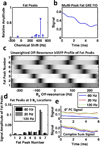
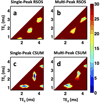
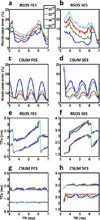

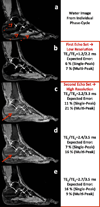
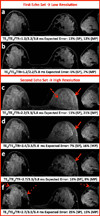

References
-
- Hennig J, Naureth A, Briedburg H. RARE imaging: a fast imaging method for clinical. Magn Reson Med. 1986;3:823–833. - PubMed
-
- Bredella MA, Tirman PF, Peterfy CG, Zarlingo M, Feller JF, Bost FW, Belzer JP, Wischer TK, Genant HK. Accuracy of T2-weighted fast spin-echo MR imaging with fat saturation in detecting cartilage defects in the knee: comparison with arthroscopy in 130 patients. AJR Am J Roentgenol. 1999;172:1073–1080. - PubMed
-
- Ma J, Singh SK, Kumar AJ, Leeds NE, Broemeling LD. Method for efficient fast spin echo Dixon imaging. Magn Reson Med. 2002;48:1021–1027. - PubMed
-
- Carr HY. Steady-state free precession in nuclear magnetic resonance. Phys Rev. 1958;112:1693–1701.
-
- Oppelt A, Graumann R, Barfuss H, Fischer H, Hartl W, Shajor W. FISP -- a new fast MRI sequence. Electromedica. 1986;54:15–18.
Publication types
MeSH terms
Grants and funding
LinkOut - more resources
Full Text Sources
Other Literature Sources
Medical

